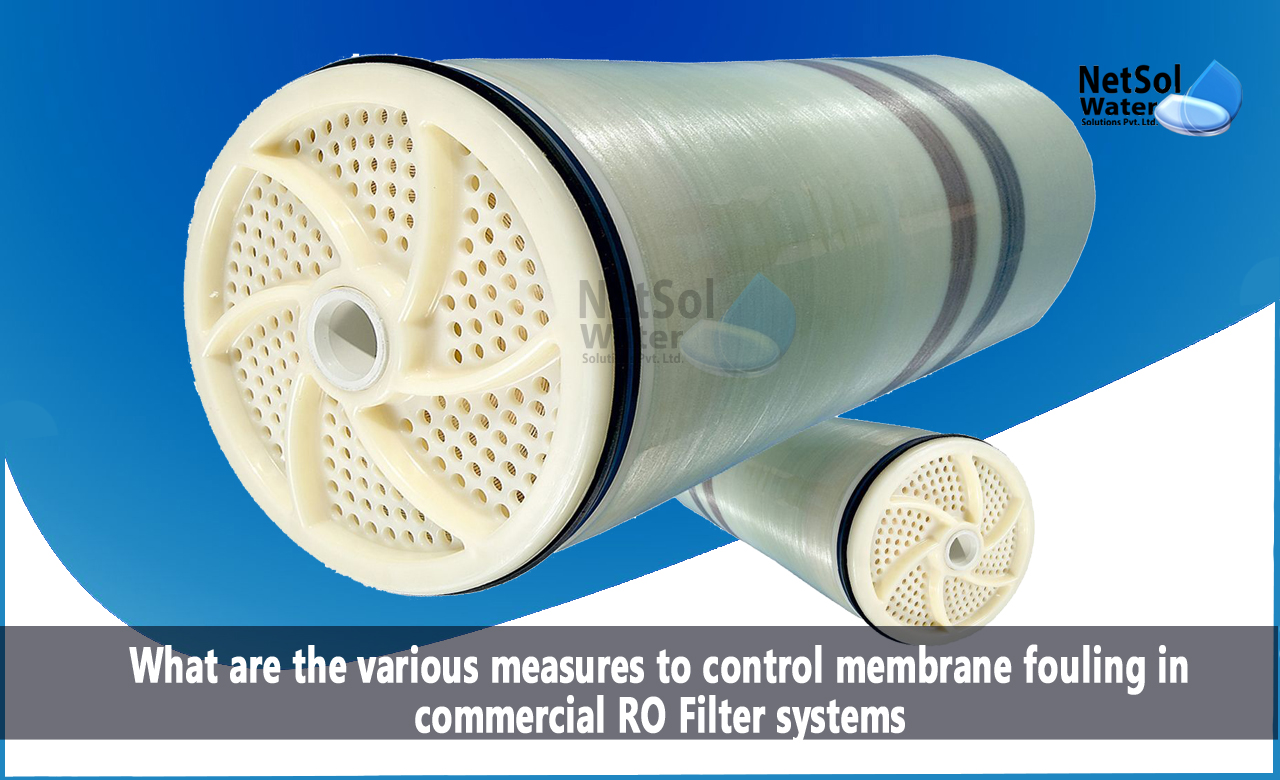Various measures to control membrane fouling in commercial RO systems
Commercial reverse osmosis (RO) filter systems are widely used to purify water for various applications. One of the most common problems faced by RO filter systems is membrane fouling. Membrane fouling occurs when contaminants build up on the surface of the RO membrane, reducing the efficiency of the system and increasing operating costs.
In this blog, we will discuss various measures to control membrane fouling in commercial RO filter systems. So, here they are:
-
Pre-treatment of feed water
Pre-treatment of feed water is an important step in controlling membrane fouling. This involves removing suspended solids, dissolved organic compounds, and other contaminants from the water before it enters the RO system. There are several pretreatment methods available, including sedimentation, coagulation, flocculation, and filtration. Each method targets specific contaminants and can be used alone or in combination with other methods.
Sedimentation involves allowing suspended solids to settle to the bottom of a tank. Coagulation and flocculation involve adding chemicals to the water to clump together small particles, making them easier to remove. Filtration can be used to remove larger particles, such as sand and gravel, from the water.
-
pH adjustment
The pH of the feed water can also affect the likelihood of membrane fouling in commercial RO filter systems. The optimal pH range for RO systems is between 6.5 and 7.5. If the pH is too low, acidic compounds can accumulate on the membrane surface, leading to fouling. Conversely, if the pH is too high, scaling can occur, which can also reduce the efficiency of the RO system.
-
Backwashing and cleaning
Regular backwashing and cleaning are essential in controlling membrane fouling. Backwashing involves reversing the flow of water through the system to remove any accumulated particles or debris. Cleaning involves using specialized cleaning solutions to remove contaminants that have built up on the membrane surface.
There are two types of cleaning methods: offline cleaning and online cleaning. Offline cleaning involves taking the system offline and manually cleaning the membrane. This method is typically used when fouling is severe or when online cleaning is not effective. Online cleaning involves using specialized cleaning solutions that are injected into the system while it is still in operation.
-
Chemical treatment
Chemical treatment can be used to control membrane fouling in commercial RO filter systems. Antiscalant and biocide chemicals are commonly used to prevent scaling and bacterial growth on the membrane surface. These chemicals can be added to the feed water before it enters the RO system, or they can be injected directly into the RO system.
Antiscalant chemicals work by preventing the formation of scale on the membrane surface. They can be highly effective in preventing scaling and extending the life of the membrane. Biocide chemicals work by killing bacteria and preventing bacterial growth on the membrane surface. They are typically used in systems where bacterial growth is a concern.
Conclusion:
In conclusion, controlling membrane fouling is essential in maintaining the efficiency and lifespan of commercial RO filter systems. Pretreatment of feed water, pH adjustment, regular backwashing and cleaning, and chemical treatment are effective measures for controlling membrane fouling. It is important to monitor the system regularly and adjust treatment methods as needed to ensure effective performance and prevent costly damage. By implementing these measures, the efficiency and lifespan of the RO system can be extended, reducing operating costs and improving overall productivity.
For any other support, inquiries, or product purchases, call on +91-9650608473 or email at enquiry@netsolwater.com



